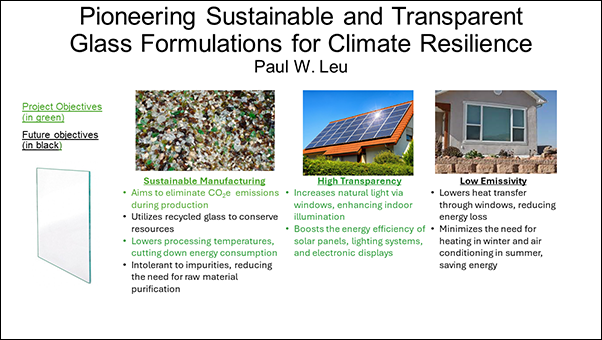This project seeks to develop a glass formula capable of being sustainably manufactured which assists in reducing energy consumption by increasing the amount of light allowed to pass through the glass. This property can enhance indoor illumination and the efficiency of solar panels, lighting systems, and electronic displays.

Research Methodology
A database of glass formulations will be analyzed in terms of carbon dioxide equivalent emissions and transparencies in order to build a machine learning model that can rapidly develop new, optimized sustainable glass formulations. Select formulas will be fabricated and the resulting samples' transparency will be quantified using optical spectrophotometry.
Research Outcomes
Low-carbon-emission formulas for glass which require low processing temperatures will be developed, with an eventual goal of improving these formulas so that they are compatible with recycled glass and impurity-resistant. Glass formulas will be designed to maximize transparency, and, once this is accomplished, will be further improved upon by minimizing the glass' heat transfer abilities.
Research Goals
This research seeks to reduce the energy consumption and carbon dioxide equivalent emissions associated with glass manufacturing by developing sustainable glass formulations that simultaneously maximize transparency in order to reduce consumer energy use. This research further seeks to improve upon the glass manufacturing process so that it is less reliant on carbon-intensive raw materials, as well as more tolerant to a greater volume of impurities.
Research Focus Area
